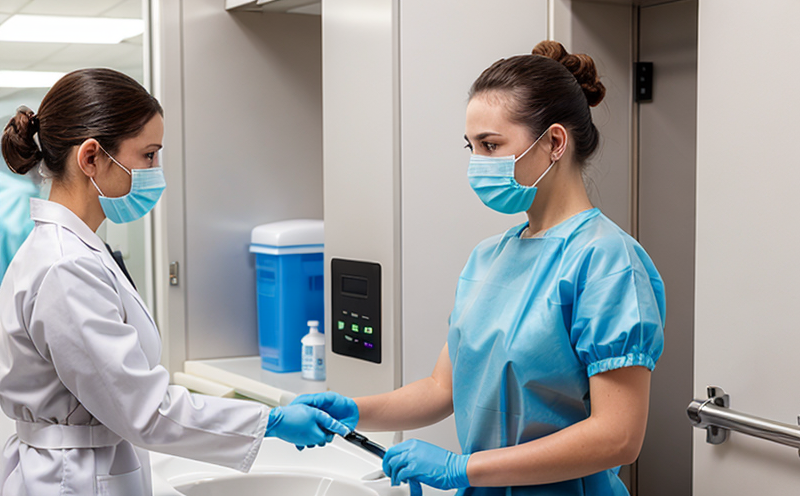Antiviral property evaluation of laboratory coats
The antiviral properties of laboratory coats are a crucial aspect in ensuring the safety and health of personnel working in environments where they may be exposed to various infectious agents. The goal is to evaluate how effectively these garments can prevent viral particles from adhering, attaching, or infecting the wearer. This evaluation process typically involves standardized test methods that measure the ability of laboratory coats to inhibit virus replication.
The antiviral property of a garment is evaluated by exposing it to various concentrations and strains of viruses under controlled conditions. The efficacy of the treatment applied (if any) on the fabric also plays a significant role in determining the overall protection provided. The most commonly used protocols for such evaluations include ISO 20743, which provides guidelines for antimicrobial textiles.
Testing procedures involve placing virus-laden solutions onto the fabric and then assessing the reduction or elimination of viable viruses post-exposure. This can be done through various methods such as plaque assays, TCID50 (Tissue Culture Infectious Dose 50), or real-time PCR to quantify viral RNA.
Post-treatment, the fabric is washed multiple times according to industry standards like AATCC TM16 for home laundering and AAMI PB70 for healthcare facilities. This ensures that any applied treatments do not compromise the functionality of the garment during normal use. The resistance of the treated material against washing conditions also contributes to its overall performance.
For R&D engineers, understanding these parameters is essential as they can influence the selection of raw materials and manufacturing processes used in producing laboratory coats with enhanced antiviral properties. In addition, compliance officers need to ensure that their facilities adhere to relevant regulatory requirements regarding personal protective equipment (PPE) standards like those set by OSHA or CDC.
The importance of accurate testing cannot be overstated; incorrect assessments could lead to underperforming products that fail to provide adequate protection against pathogens. Thus, it is imperative for laboratories conducting these evaluations to follow strict protocols and use appropriate methodologies as specified in international standards.
- Accurate measurement of viral load before and after contact with the fabric
- Standardized washing procedures to simulate real-world usage scenarios
- Use of appropriate detection methods for quantifying viral activity
- Inclusion of relevant control samples to ensure consistent results
In summary, evaluating the antiviral properties of laboratory coats is a complex process that requires careful planning and execution. It involves understanding not just the technical aspects but also considering how these factors impact real-world applications.
Why It Matters
The evaluation of the antiviral property of laboratory coats is critical for ensuring the safety and well-being of healthcare professionals who frequently come into contact with potentially harmful pathogens. By assessing these garments' ability to inhibit viral activity, laboratories can provide evidence that supports their effectiveness as part of an overall infection control strategy.
Healthcare workers often wear lab coats during clinical procedures where they might be exposed to various types of viruses such as influenza A or B, norovirus, and other enteric pathogens. Ensuring that these garments have been properly evaluated according to recognized standards helps build confidence among end-users that they are receiving high-quality protective equipment.
From an ethical standpoint, it's vital for organizations responsible for manufacturing and distributing PPE to prioritize quality over cost when developing new products. This ensures that healthcare providers can trust the efficacy of their personal protective gear without having to rely solely on anecdotal evidence or poorly conducted studies.
Industry Applications
The evaluation of antiviral properties in laboratory coats finds application across multiple sectors including hospitals, research institutions, and pharmaceutical companies. In healthcare settings, these evaluations help ensure that staff members are adequately protected against infectious agents while minimizing the risk of cross-contamination within facilities.
Research laboratories often require robust protection from potentially dangerous samples being handled during experiments. By incorporating antiviral treatments into their coats, researchers can reduce the likelihood of accidental exposure leading to outbreaks or spread of diseases.
Pharmaceutical manufacturers also benefit greatly from this evaluation process as they strive to develop safer and more effective medications. Using laboratory coats with proven antiviral properties allows them to conduct trials under controlled conditions knowing that their personnel are as protected as possible.





